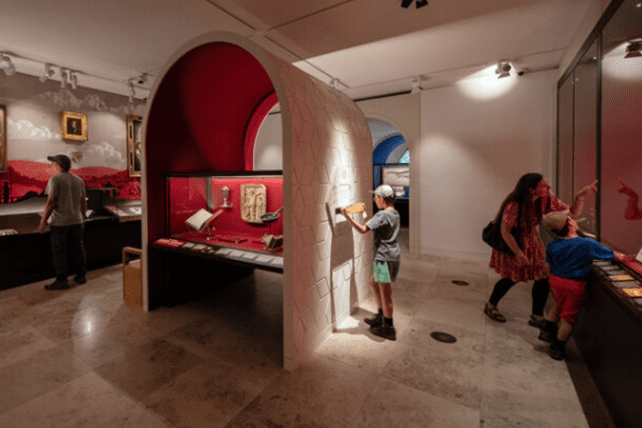Amina Wright, the senior curator of the Faith Museum, says all the items on display form a narrative of faith: “Every object is seen as a witness to faith, showing the impact of faith on Britain.” But when it comes to the present century, Wright said the task is more complicated. “We can’t explain the last 23 years in the same way. We need more distance to gain a perspective,” she said, also noting the difficulty for curators in finding physical objects for today’s faith experiences, when so much is digital.
The larger Bishop Auckland rejuvenation efforts have received an additional £12.4 million from the British National Lottery as well as grants from other philanthropists. Government regeneration money has also poured into post-industrial Bishop Auckland, while Ruffer himself has spent well over £100 million. Three charities have been created to run the projects, with one, the Zurbarán Trust, holding the paintings and other valuables.
Ruffer’s Bishop Auckland revival also includes a Spanish tapas bar, adjacent to the Spanish Gallery, and a hotel. Together with an annual summer pageant known as Kynren and plans for a leisure park, the revitalization efforts aim to attract between 1 to 1.5 million visitors a year by 2028, said Ruffer, even though the town is off the beaten track and without a direct railway or motorway to London.
Next up, Ruffer hopes to purchase the 6-meter-long gold braid tapestry called “Saint Paul Directing the Burning of the Heathen Books,” which was commissioned by Henry VIII when he declared himself Supreme Head of the Church of England. Ruffer describes it as “the birth certificate of the Church of England.” It was missing for years but turned up in Spain. The Spanish government says it can return the artifact to Britain if the Faith Museum can raise £4.55 million. Ruffer is looking for donations, and a space for it in the Great Gallery at the Faith Museum awaits.
This article originally appeared here.

